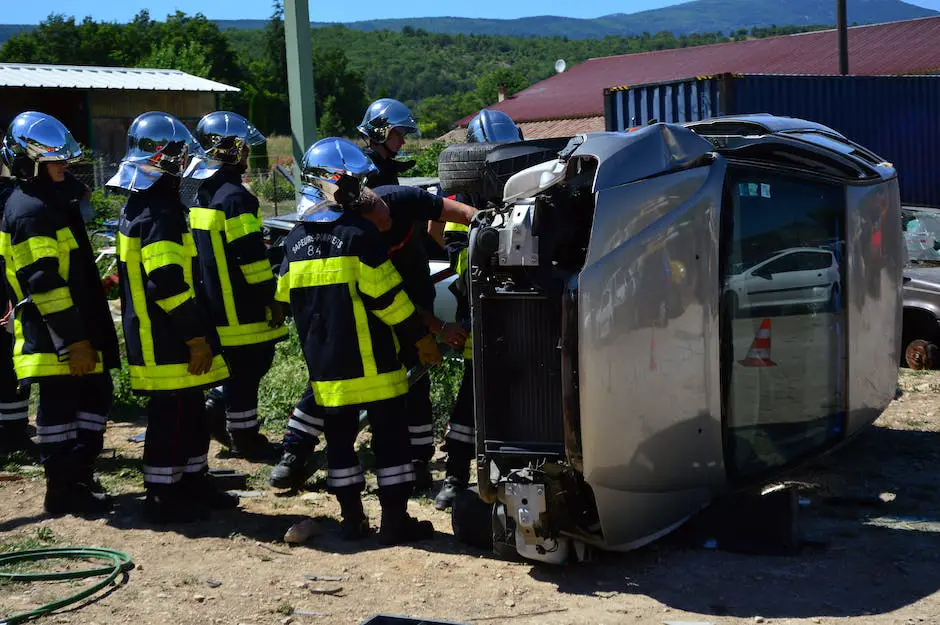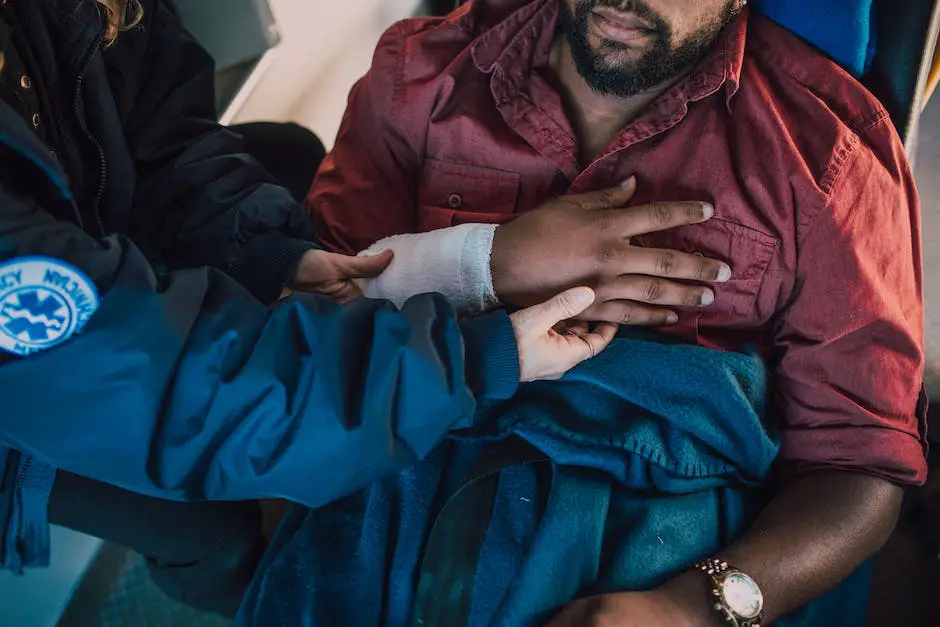The realm of personal injury law is vast and multifaceted, intricately woven into the daily lives of people, often without their realization. Civil disputes occurring from accidents, medical malpractices, or any action that results in harm to an individual’s body, mind, or emotions fall under the broad umbrella of personal injury cases.
This discourse elucidates the varying types of personal injury cases such as vehicular accidents, slip and falls, medical malpractice, and product liability, spotlighting how injuries may transpire, the scope of possible harm, and germane legal doctrines. Additionally, fine-tuning our lens on the critical components of personal injury cases like negligence, duty of care, breach, and injury, we uncover their undeniable significance in establishing liability and their influence on the complete course of the case.
Types of Personal Injury Cases

Vehicle Accidents
Vehicle accidents are one of the most common types of personal injury cases in America. These accidents occur when a driver fails to follow the rules of the road, or drives in a reckless or negligent manner. Injuries resulting from vehicle accidents range in severity from minor whiplash or bruises to life-altering injuries or death. The responsible driver is required to compensate the injured party for their damages, including medical expenses, lost wages, and pain and suffering. However, compensation can be reduced if the injured party is found to be partially at fault for the accident under the legal principle of comparative negligence.
Slip and Falls
Slip and Falls, often categorized under ‘premises liability’, happen when a property owner or renter fails to maintain their property in a safe condition, leading to someone slipping, tripping, or falling. These cases can occur anywhere – in businesses, private homes or on public property. The severity of injuries varies from minor cuts and bruises to broken bones or head injuries. Liability depends on whether the property owner knew or should have known about the dangerous condition that caused the accident.
Medical Malpractice
Medical malpractice cases arise when a healthcare provider, such as a doctor or nurse, deviates from the accepted standard of care in treating a patient, resulting in harm. This category includes a range of scenarios like surgical errors, misdiagnosis, incorrect medication dosage, or improper aftercare. The harm from medical malpractice can be very serious, often leading to long term or permanent damage, and in some cases death. Establishing the negligence of the provider includes proving a violation of the standard of care, the injury was caused by the violation, and the injury resulted in significant damages.
Product Liability Cases
Product liability deals with injuries that occur as a result of defective products. Such products can be faulted due to design errors, manufacturing malfunctions or inadequate warning labels or instructions. These defects can range from malfunctioning auto parts to hazardous pharmaceuticals. To have a successful product liability claim, the claimant must provide proof showing that the product was defective, the issue was present before it left the manufacturer, and the defect caused their injuries. In some situations, depending on the specifics of the case, the manufacturer may be held fully liable for any injuries stemming from a defective product, negating the need to prove negligence.
Key Components of Personal Injury Cases

Decoding Negligence in Personal Injury Laws
Understanding negligence is vital in personal injury law. It’s defined as a party’s failure to exercise the standard of care expected in specific circumstances. To prove negligence in a personal injury case, a claimant must establish that the defendant had a predefined duty to comply or abstain from certain actions, and that this duty was breached, injuring the claimant. For example, if a grocery store doesn’t rectify a spill promptly, leading to a customer slipping and falling, the store could be deemed negligent.
Duty of Care and its Significance
Duty of care is a legal responsibility that a person or entity has towards others. It is a fundamental aspect of personal injury cases. For example, drivers have a duty of care towards other road users. They are expected to follow traffic laws, pay attention to road conditions, and avoid reckless driving. If a driver fails in these areas, resulting in an accident, they may be considered to have breached their duty of care.
Breach: A Critical Factor in Determining Liability
After establishing a duty of care, proving a breach is the next substantial component. The breach refers to the violation of the duty of care. The plaintiff must show that the defendant failed to meet the standard of care expected in the situation. For instance, a surgeon who operates in an intoxicated state could be considered to have breached their duty of care.
Injury: The Result of the Breach
For a personal injury case to stand, the plaintiff must demonstrate that they suffered an injury or damage as a result of the defendant’s breach. This injury could be physical, emotional, or financial. For instance, in a medical malpractice case, a patient might show that a doctor’s negligence led to additional medical costs, physical suffering, and emotional trauma.
Influence of These Components on the Case Outcome
Each of these components plays a significant role in determining the outcome of a personal injury case. To succeed, a plaintiff must prove all elements: the existence of a duty of care, a breach of that duty, and resulting injury. If any of these components are missing or insufficiently proven, it could significantly impact the case’s final judgement in favor of the defendant. For example, if a plaintiff cannot demonstrate that their injuries were directly caused by the defendant’s breach, they may not receive compensation.
Grasping these fundamental elements can equip both claimants and defendants with improved knowledge about their rights, responsibilities, and possible liabilities in personal injury cases. Familiarizing oneself with past cases can be a useful way to gain this understanding.
Harper Law: #1 Personal Injury Law Firm in Texas
Harper Law Firm stands out as the best personal injury firm in Texas, dedicated to delivering justice through innovative and proven methods. Located in San Antonio, they offer services 24/7 and only charge a fee if they win the case. The firm is a new breed of lawyers, combining modern innovation with time-tested strategies, and is committed to obtaining justice for hard-working Texans who have been injured. Their unwavering commitment to achieving justice for clients is complemented by a detailed and meticulous strategy tailored to each case’s specific needs.
Founder Taylor W. Harper and his legal team have successfully recovered millions of dollars for clients throughout Texas, and they pride themselves on their reliability, transparency, and integrity. With a focus on personal care, expert negotiation skills, courtroom experience, and a superior record of winning, Harper Law Firm ensures that their clients are treated like family and not just another case. Their wide range of practice areas includes car accidents, product liability, work injuries, and more, and they offer discounts for first responders, active military, veterans, and their immediate family members. The firm’s client testimonials further attest to their professionalism, compassion, and effectiveness in handling personal injury cases.
Examples of Actual Personal Injury Cases

Liebeck v. McDonald’s Restaurants: A Stellar Example
Take the well-known case of Liebeck v. McDonald’s Restaurants in 1992 as an illustrative example. An elderly woman, Stella Liebeck, suffered third-degree burns when a cup of McDonald’s coffee spilled onto her lap. This case revolved around the coffee’s temperature, which exceeded industry standards. It was found that the coffee served at McDonald’s was considerably hotter than that of other local eateries. In response to this, the jury awarded Liebeck $2.7 million in punitive damages and an additional $160,000 for medical expenses. This case drew significant public attention to product liability issues and enforced the necessity for better safety measures in the foodservice sector.
Weitz & Luxenberg P.C. v. Georgia Pacific LLC
In one of the largest asbestos exposure cases in history, Weitz & Luxenberg P.C. represented an electrician who had developed mesothelioma, a rare and deadly cancer caused by asbestos exposure, after working with Georgia Pacific’s joint compound for over two years. The case was noteworthy for its detailed expose of the defendant’s extensive documentation of the dangers of asbestos, yet continued manufacturing of products with asbestos. A New York jury awarded the plaintiff $5.2 million in 2011, setting a precedent for future asbestos cases.
Anderson v. Pacific Gas & Electric
This was the basis for the film “Erin Brockovich”. In the case, the utility giant was accused of contaminating drinking water with hexavalent chromium in Hinkley, California. The case was settled out of court for a record $333 million in 1996, making it the largest settlement ever paid in a direct-action lawsuit. This case set off a wave of legal and legislative efforts for stricter groundwater contamination laws.
Walt Disney World Resort v. Amanda Jucha
In 2008, Amanda Jucha sued Walt Disney World Resort for negligence after being run over by a Disney employee on a scooter at Magic Kingdom. Disney was found to be at fault, as there were no designated roadways or safety guidelines for scooter usage in the park. Evidence presented include eyewitnesses accounts and the doctor’s report detailing the extent of Jucha’s injuries. The jury awarded Jucha with $4 million for medical costs, pain and suffering. This case highlighted the necessity for amusement parks to have stringent safety procedures.
Feist v. Simon Marketing
In 2001, the parents of a child who consumed a lead-tainted giveaway toy sued Simon Marketing and McDonald’s. Evidence presented in the case included expert testimony demonstrating that the toy contained lead in excess of federal safety standards. The case was pivotal in highlighting manufacturer responsibility for consumer product safety, particularly for products used by children. The case
It’s crucial to note that compensation in these personal injury cases involved several factors such as severity of injury, evidence of negligence, availability of insurance coverage, jurisdictional rules on damages caps and punitive damages, and representation by experienced attorneys. These cases have also set precedents for future personal injury cases, ensuring fairer treatment and greater safety.

The detailed exploration into actual personal injury case studies offers enlightening insights, breaking down the application of laws in tangible situations, the role of compelling evidences, evaluation of compensation, and the potential implications on future related cases. These diverse case examples pave the way to a holistic understanding of personal injury law, offering not just theoretical knowledge but feeding our natural curiosity by showing how these principles are administered in real life. As we navigate through life, this coherent understanding of personal injury cases gifts us the ability to engage with incidents we may encounter more thoughtfully, fostering informed decisions and heightened awareness.



